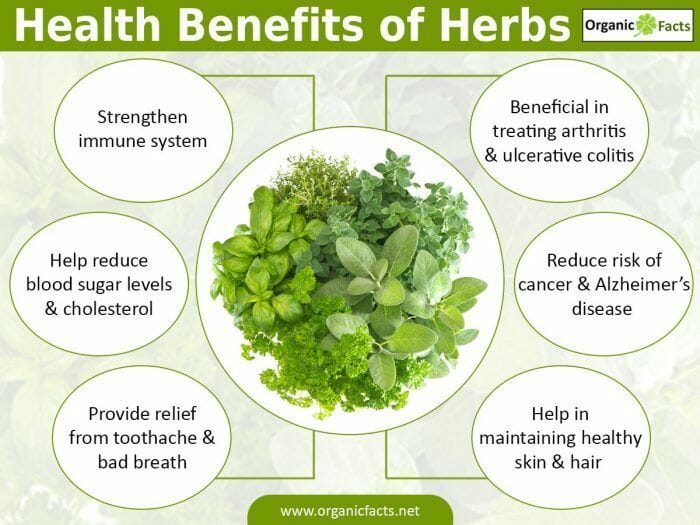
Are you ready to take your homemade sauces to the next level? If so, you’ve come to the right place! In this article, we’re going to explore the world of herbs and uncover the best ones for creating delicious homemade sauces that will have your taste buds doing a happy dance.
Picture this: you’re in the kitchen, a pot of simmering sauce on the stove, and the aroma of fresh herbs fills the air. It’s magic in the making! But which herbs should you choose to elevate your sauces to culinary greatness? Well, my friend, that’s what we’re here to discover together.
Whether you’re a seasoned chef or just starting out in the culinary world, knowing the right herbs to use can make all the difference. So, grab your apron and get ready to embark on a flavorful journey as we unveil the secrets of the best herbs for homemade sauces.
Best Herbs for Homemade Sauces
Enhance your homemade sauces with these flavorful herbs:
- Add a zesty kick with fresh basil leaves.
- Infuse a subtle earthiness with thyme.
- Garnish with fragrant parsley for a pop of color.
- Enjoy a hint of licorice flavor from tarragon.
- Create depth with the aromatic rosemary.
Experiment with these herbs in your favorite sauce recipes to elevate their taste to new heights!
The Flavorful World of Herbs: An Introduction
Before we delve into the best herbs for homemade sauces, let’s take a moment to appreciate the diverse and aromatic world of herbs. Herbs are derived from the leaves of plants and are used primarily for their flavor and aroma. They are packed with essential oils and compounds that add depth and complexity to dishes.
From the boldness of basil to the freshness of parsley, each herb brings its own unique character to the table. Now, let’s explore the seven best herbs for homemade sauces and their incredible potential.
Basil: The King of Herbs
Basil, with its distinct aroma and flavor, is undoubtedly the king of herbs when it comes to homemade sauces. This versatile herb is a staple in Italian cuisine and pairs perfectly with tomatoes, making it a popular choice for pasta sauces and pizza toppings. Its sweet and slightly peppery taste adds a burst of freshness to any dish. Basil can be used either fresh or dried, but the fresh leaves offer an unrivaled intensity of flavor. Add chopped fresh basil to your sauces towards the end of cooking to preserve its vibrant taste.
Notable sauces: Classic marinara, pesto, caprese sauce.
Tips: To prevent the leaves from turning black, tear them instead of cutting with a knife. Basil can also be frozen to preserve its flavor for longer periods.
Parsley: The Bright Green Flavor Booster
Parsley, with its vibrant green color and fresh taste, is a staple herb in many cuisines around the world. It provides a vibrant burst of flavor and a touch of elegance to homemade sauces. The two popular types of parsley are curly parsley, known for its decorative appearance, and flat-leaf parsley, also called Italian parsley, which has a stronger flavor. Parsley is an excellent choice for light sauces, seafood-based sauces, and creamy dressings. Add a handful of finely chopped parsley at the end of cooking to retain its vibrant color and fresh taste.
Notable sauces: Garlic butter sauce, chimichurri, tzatziki.
Tips: To keep parsley fresh for longer, trim the stems and place the bunch in a glass of water before refrigerating. Change the water every few days.
Oregano: The Mediterranean Must-Have
Oregano, with its pungent and earthy flavor, is a staple herb in Mediterranean cuisine. It pairs perfectly with tomato-based sauces, adding depth and richness to the dish. Oregano can be used in both fresh and dried forms, but the dried leaves are more potent. Add dried oregano early in the cooking process to infuse its flavors into the sauce. If using fresh oregano, add it towards the end to preserve its delicate aroma. It’s worth noting that Greek oregano is known for its intense flavor and is widely regarded as the best variety.
Notable sauces: Pizza sauce, spaghetti Bolognese, Greek tzatziki sauce.
Tips: Crush dried oregano between your palms before adding it to release its essential oils and enhance its flavor.
Thyme: Aromatic Elegance in Every Drop
Thyme, with its delicate aroma and subtle earthy flavor, is an herb that adds a touch of elegance to any homemade sauce. It complements a wide range of dishes and pairs exceptionally well with rich and hearty sauces. Whether you’re making a savory gravy or a creamy mushroom sauce, thyme can take it to the next level. Fresh thyme leaves can be used in whole sprigs or chopped, while dried thyme works well for longer cooking times. Add thyme at the beginning of the cooking process to infuse its aromatic flavor into the sauce.
Notable sauces: Mushroom sauce, red wine reduction, roasted garlic sauce.
Tips: Strip thyme leaves from the stem by running your fingers along the stem in the opposite direction of growth. Be cautious not to include any tough stems.
Rosemary: The Fragrant Herb of Mediterranean Delights
Rosemary, with its distinct pine-like aroma and robust flavor, is a herb that adds character and depth to homemade sauces. It is an essential ingredient in many Mediterranean dishes, especially those featuring roasted meats and vegetables.
Rosemary pairs wonderfully with olive oil, lemon, and garlic, infusing dishes with its delightful fragrance. While dried rosemary works well in long-cooking sauces, fresh rosemary sprigs can be used for shorter cooking times. Remember to remove the woody stem before serving the sauce.
Notable sauces: Lamb sauce, roasted vegetable sauce, lemon rosemary gravy.
Tips: To release the flavor of dried rosemary, crush it between your fingers before adding it to the sauce. Use a sharp knife or kitchen shears to remove the leaves from fresh rosemary sprigs.
Mint: The Refreshing Twist
Mint, with its cooling and refreshing taste, is a herb that adds a unique twist to homemade sauces. While commonly associated with desserts and beverages, mint also complements savory and tangy sauces. Its bright flavor cuts through richness and adds a refreshing element to the dish.
Mint works particularly well with fruits, lamb, yogurt, and citrus flavors. Add finely chopped fresh mint leaves at the last minute to retain their vibrant green color and fresh taste.
Notable sauces: Tzatziki, strawberry sauce, pea and mint sauce.
Tips: To extract the maximum flavor from mint leaves, gently crush them in your hands just before using.
Cilantro: The Versatile Herb with a Cultural Twist
Cilantro, with its distinctive citrusy and slightly peppery taste, is a versatile herb used in various cuisines worldwide. It adds a burst of freshness and a touch of exotic flavor to homemade sauces. Cilantro works well in both raw and cooked applications, making it perfect for both cold and warm sauces.
From spicy salsas to creamy curry sauces, cilantro can elevate the taste and complexity of your dishes. Add it towards the end of cooking to preserve its vibrant flavor.
The Magic of Herb-Infused Homemade Sauces
Now that you’re acquainted with the best herbs for homemade sauces, it’s time to unleash their magic in your kitchen. Incorporating these flavorful herbs into your sauces can truly elevate your culinary creations, allowing you to experiment with different tastes and aromas.
Whether you’re aiming for an Italian-inspired marinara or a zesty mint-infused sauce, infusing your homemade sauces with the right herbs can take your dishes to new heights. So, next time you’re in the kitchen, reach for the herbs, and let your creativity run wild!
Frequently Asked Questions
Whether you’re a seasoned chef or a beginner in the kitchen, using the right herbs can take your homemade sauces to the next level. Here are some commonly asked questions about the best herbs to use:
1. Which herbs go well in tomato-based sauces?
Tomato-based sauces, like marinara or bolognese, are deliciously enhanced by herbs such as basil, oregano, and thyme. The aromatic flavor of basil complements the natural sweetness of tomatoes, while oregano adds earthiness and thyme lends a savory note. Adding these herbs in the right proportions can elevate your tomato-based sauces to restaurant-quality.
Experiment with different combinations to find the flavor profile that suits your taste buds best. Remember, a little goes a long way, so start with small amounts and adjust to your liking.
2. Are there any herbs that work well in creamy white sauces?
When it comes to creamy white sauces, herbs like parsley, tarragon, and chives shine. Parsley adds a fresh, bright taste, tarragon lends a subtle anise-like flavor, and chives provide a mild onion-like essence. These herbs bring balance and depth to creamy sauces.
To incorporate these herbs, chop them finely and add them towards the end of cooking to preserve their delicate flavors. You can also sprinkle some freshly chopped herbs on top of the sauce as a garnish for an extra burst of flavor.
3. Can I use dried herbs instead of fresh ones?
Absolutely! While fresh herbs bring a vibrant flavor to your sauces, dried herbs can be just as delicious. Dried herbs have a more concentrated flavor, so you’ll want to use smaller amounts compared to fresh herbs. As a general rule, use approximately one-third of the amount of dried herbs in place of fresh herbs.
If you’re using dried herbs, it’s a good idea to add them earlier during the cooking process to allow their flavors to infuse into the sauce. Keep in mind that dried herbs have a longer shelf life, making them a convenient option for homemade sauces.
4. Can I mix different herbs together in sauces?
Absolutely! Mixing different herbs can create a beautiful symphony of flavors in your sauces. Popular herb combinations include rosemary and thyme, parsley and chives, and sage and basil. Combining herbs allows you to experiment with unique taste profiles and create a signature sauce that tantalizes the taste buds. Just make sure to balance the flavors, so one herb doesn’t overpower the others.
Start by using small amounts of each herb and taste as you go. This way, you can adjust the proportions to achieve the desired taste. Don’t be afraid to get creative and discover your own herb combinations that perfectly complement your homemade sauces.
5. Can I use herbs in sweet sauces?
While herbs are more commonly associated with savory dishes, they can also add depth and complexity to sweet sauces. Herbs like mint, lavender, and cinnamon can transform a regular sweet sauce into a delightful culinary experience.
When using herbs in sweet sauces, start with a small amount and gradually increase to avoid overpowering the flavors. Mint pairs well with berries, lavender brings elegance to creamy desserts, and cinnamon adds warmth to apple-based sauces. Experiment with different herb options and let your taste buds guide you toward your favorite combinations.
Making homemade sauces is fun and easy, and using fresh herbs can take your sauces to the next level. Whether you’re making a tomato sauce, pesto, or gravy, here are some of the best herbs to include:
Basil adds a sweet and aromatic flavor, while parsley brings a fresh and bright taste. Rosemary adds a woody and fragrant note, and thyme gives a warm and earthy flavor. Oregano adds a hint of bitterness, and cilantro brings a unique and tangy taste.
By using these herbs, you can create delicious and flavorful homemade sauces that everyone will love. Give them a try and get creative in your kitchen!



